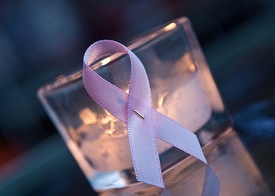
October is breast cancer awareness month in the U.S. Pink ribbons, 5k races, and educational events mark the campaign to educate the public about the disease and push for more research to find a cure. We hold fundraisers and portray survivors as heroes and positive role models. A number of sociologists and other academics have analyzed and critiqued the U.S. breast cancer industry, including Gayle Sulik, Sabrina McCormick, and Stefano Puntoni.
In other parts of the world however, breast cancer is silently killing women. For one, the disease still carries a stigma that keeps women from accessing treatment. New York Times blogger Denise Grady discusses this stigma towards the disease in developing nations, particularly African countries, as well as the many additional barriers to treatment. These barriers include scarce resources, shame surrounding the disease, corruption, and the real constraints of economic and family responsibilities, all of which make for a deadly combination. Grady states,
Survival rates vary considerably from country to country and even within countries. In the United States, about 20 percent of women who have breast cancer die from it, compared with 40 to 60 percent in poorer countries. The differences depend heavily on the status of women, their awareness of symptoms, and the availability of timely care.
Although it is not new knowledge that diseases disproportionately affect poorer countries and individuals, cancer treatment and education has been neglected in developing nations. It has been overshadowed by other diseases like malaria and AIDS, and due to a lack of public awareness on both the national and international scales, it has been underfunded by governments and foundations. Research from PRI indicates that “cancer kills more people in low- and middle-income countries than AIDS, malaria, and TB combined.”

Comments 2
Friday Roundup: Nov. 1, 2013 » The Editors' Desk — November 1, 2013
[…] “Pink Ribbons for Africa,” by Kat Albrecht. […]
#whatiwore 2018w14 + Sunday links – Un Armario Verde — May 26, 2018
[…] A random update 2: I have a little politico-fashion kerfuffle going on in my head… (a) I was on antibiotics and now have a sore throat, (b) the weather is right for a light scarf, not for one of my woolen ones, (c) my only light scarf is mustard (HnM 2008, I use it for covering when henna dying and for summer turbans), I love the color and love the scarf, but (d) in the current political climate it is likely to be assumed to be a message I do not feel strongly about (and that’s all I hope to say here about the whole Catalan thing). I know it’s mostly in my head, but at least there the struggle is real. Clearly, co-opting colors for a cause is a very dodgy thing, especially if a cause is not an extremely generalized one. The obvious ‘good’ example here would be the fight against breast cancer, with all the needed caveats about pink-washing – 1, 2, 3, 4, 5, 6, 7. […]